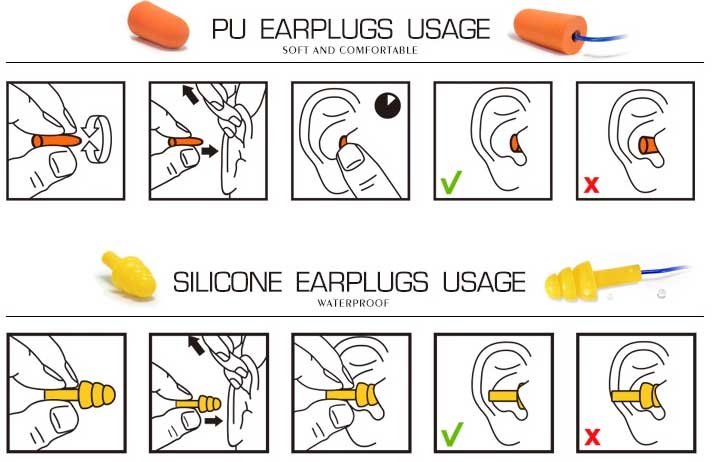Imagine that you are working. Suddenly You may be surrounded by loud machinery and equipment. Whether it is a compressor, a jackhammer, or heavy equipment—it's taking a toll on your hearing and your company's bottom line. Do you think you can protect your ears from hazardous noise dose? Your hearing protection might not be protecting you as well as you feel.
Over 22 million workers are exposed to hazardous noise every year, so it's essential to make sure you have a hearing conservation program in place. Hearing loss costs companies around $242 million a year in workers' comp.Improperly inserted ear plugs won't create a tight seal, leaving your ears vulnerable to unsafe levels of industrial noise, loud music or your partner's snoring.
You probably think that because you wear earplugs every day that it's no big deal. What if we told you that you might not be wearing them the right way? Do you know the right way to insert your earplugs?
Put the soft foam earplugs in; please Remember to roll, pull, and hold. This guide is intended for foam ear plugs, but will work for wax, PU,silicone or reusable ear plugs.
1. Wash
clean hands to keep from accumulating dirt or germs into your ears!
2. Roll
Using your thumb and index fingers, Roll the earplug up into a small, thin roller. This will make it smaller and more comfortable to insert.
3. Pull
Pull the top of your ear back and up with another hand to straighten out your ear canal. The rolled-up earplug should slide right in. This will pull your ear open a bit, allowing you to insert your earplug more easily. Use a mirror if you're having trouble.
4. Insert the ear plug
With a steady hand, insert the ear plug until it expands to fill the ear canal. If using a foam ear plug you're gonna want to hold the earplug inside your ear for 10-20 seconds while the foam expands to fill the ear canal. The voice sound you hear will be muffled when the plug has made a good seal.
Check the fit when you're all done. Most of the foam body of the earplug should be within the ear canal. Try cupping your hands tightly over your ears. If sounds are much more muffle with your hands in place, the earplug may not be sealing correctly. Take the earplug out and try again.

Generally speaking, there's no difference or left or right-sided earplug. A plug is fit for whatever left or right ear.
If the earplug is uncomfortable and painful, you might need a smaller earplug.
If the earplug still isn't blocking out the noise, you might need a giant ear plug.
Now that you know the correct way to use earplugs on the job make sure you are wearing hearing protection that provides an excellent noise reduction rating (NRR).
Earplugs are generally safe to use while sleeping. However, it is possible that frequent use can lead to some minor problems in the long run, such as earwax buildup.
They are one-time use because they get dirty quickly and are quickly infested with bacteria. Therefore, it is not recommended to use disposable earplugs more than once for hygiene reasons.
Copyright © Hebei Sinotools Industrial Co.,Ltd. All Rights Reserved | Powered by  Sitemap
Sitemap